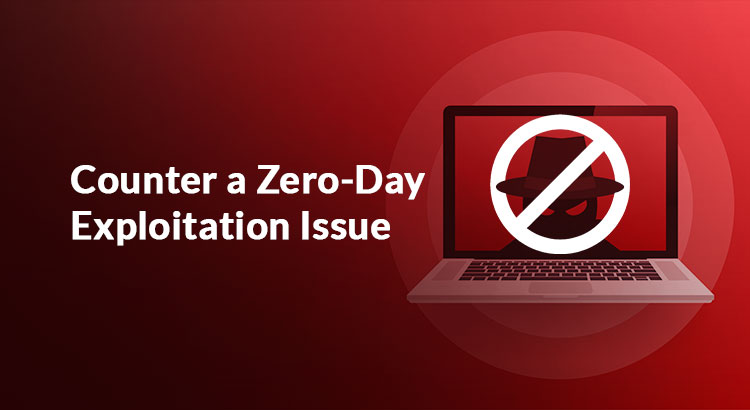A “zero-day attack” refers to an attack which exploits a bug or flaw in a particular software or firmware that the vendor does not know about. Usually found in the digital content piracy space, it may appear in the area of network security as well.
A “zero-day exploit” and a “zero-day vulnerability” are, in essence, quite different from each other. In simple terms, we can simply describe the former as the “cause” while the latter is its “effect”.
Zero-day Vulnerability
A zero-day vulnerability is a flaw or bug in hardware, software, or firmware that is unknown to its vendor. Security flaws that are known but haven’t been corrected yet will also sometimes be tagged as zero-day vulnerabilities.
A zero-day vulnerability generally opens up a timeline for a hacker before the developer or vendor fixes the bug. Its life cycle comprises of the following:
- An organization or a vendor has developed a website, system, or software, which features a severe flaw.
- The specific vulnerability has been discovered by the vendor and will be disclosed in the near future.
- The developer is trying to fix the vulnerability, which may take from around a week to several months.
- The developer has deployed the found fix (or patch) of the vulnerability, which has been successful in fixing the bug.
- The user has installed the patch on their system, which currently protects the affected device from cyber-exploits.
Usually, the opportunity for exploitation lasts anywhere from the discovery of the flaw to the deployment of the patch. An efficient cybercriminal may find out about the flaw before the vendor themselves and take advantage of the situation before anyone knows there is a problem.
Where Do Vulnerabilities Appear?
A zero-day vulnerability can appear almost anywhere in your system. It might be present in the code, or an inexperienced user may create it by abusing the program. Zero-day vulnerabilities are commonly found in IT infrastructure, which tends to pass through various operators regularly.
In some cases, a vulnerability can occur due to not updating software or firmware properly. You may also create a flaw in your system by clicking on a phishing email and give hackers the opportunity to manipulate your security code. Once a vulnerability is discovered in this code, anyone can exploit it.
Zero-Day Exploit
A zero-day exploit is the “effect” of the occurrence of a zero-day vulnerability. It is usually done using a particular technique or code to take advantage of the flaw. Essentially, a cybercriminal can exploit the issue from the get-go and gain unauthorized access to your system.
However, searching for a particular vulnerability in a lot of code can be a difficult job. Therefore, hackers tend to use various automated tools that work on a massive scale to detect bugs in your software.
Privileged Access Security redefined
with ARCON | PAM
Zero-Day Vulnerability vs. Zero-Day Exploit-The Differences
Here are some aspects that differentiate zero-day vulnerabilities from zero-day exploits.
- A zero-day vulnerability is essentially a flaw in any available system or program. It does not cause any concern or damage. However, it can be further exploited by using several automated tools. This kind of attack is known as a zero-day exploit.
- A zero-day vulnerability can occur at almost any given time but a zero-day exploit can only occur after the flaw has been found.
- You can use various security technologies to prevent a zero-day exploit situation. Nevertheless, it’s almost impossible to stop zero-day vulnerability.
How to Counter a Zero-Day Exploitation Issue?
Here are some things that can help you counter a zero-day exploit.
- TLS/SSL Certification: Along with various software and firmware programs, a zero-day vulnerability can occur in a website-based infrastructure as well, which can be secured by following the HTTPS protocol closely. You can perform this by installing a TLS/SSL certificate via the web hosting control panel. You will need to update and install your CMS to deploy HTTPS-based URLs and secure them thoroughly afterwards.
- Use End-to-End Encryption: Email is the primary method of communication between individuals in an organizational environment. Hackers create or detect vulnerability in your system by dropping a phishing mail in your inbox, which, if opened, allows them to access your system. End-to-end encryption is one way to prevent phishing. E2E makes sure that no third party can access your data and keeps it away from prying eyes.
- Use Security Compliance Management (SCM): An SCM is an extremely effective industry-grade security solution that can detect, evaluate, and mitigate the risk of system flaws. Essentially, it can be used to find vulnerabilities in your system and get rid of them before anyone can take advantage of them. This system can also help you in adhering to IT security standards properly.
Why does your enterprise need ARCON | Privileged Access Management?
Conclusion
A zero-day vulnerability is a common incident that usually gets patched up before anything unfortunate happens. Nonetheless, you should still be wary about this issue and take measurements to prevent it. Keep your systems updated regularly, use different security protocols, and talk with a security expert to learn other ways of protecting your network or system from exploitation. Good luck!

